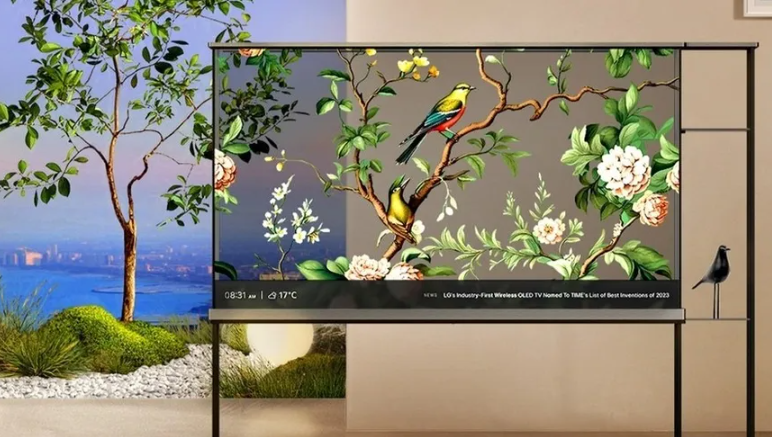
Tech giants LG and Samsung revealed transparent displays at the Consumer Electronics Show (CES) 2024, set to hit commercial markets for the first time. Each company employed different technologies, with LG utilizing OLED for its inaugural transparent display, measuring 77 inches. In contrast, Samsung opted for the groundbreaking micro LED technology, providing brighter and more precise display options.
Samsung highlighted that its three versions of transparent displays offer superior brightness and display resolution due to the high pixel density per inch, achieved through micro LED technology compared to OLED. The three models boast a slim thickness of just one centimeter, making it challenging to notice the presence of the display, creating a content appearance as if it’s floating in the air. Samsung, uniquely, designed one of its models with completely edge-free aesthetics, using colored glass for the other two, enhancing viewer focus and delivering improved content clarity.
However, Samsung clarified that the showcased versions at CES 2024 are purely experimental, without disclosing a timeline or expected pricing for the commercial release of their transparent technology.
On the other hand, LG plans to release its 77-inch transparent display in markets by June, with the expected price yet to be revealed.
LG’s new display, named LG OLED T, offers various viewing modes. It can function as a completely transparent screen, allowing content display while still showcasing what’s behind the screen. This enables the presentation of diverse content, such as a digital school of colorful fish or stars, alongside another mode that transforms it into a traditional screen for conventional content consumption. LG also provides a variety of custom content options to be displayed when the screen is closed, a feature termed “Always-On,” similar to those available on smartphones.
The company equipped the new display with the Wireless TV feature, enabling cable-free operation, aligning with its smart display family, LG M4, also unveiled at the same CES event. The sole cable required is for power, while content is streamed through a separate unit, extending up to 9 meters away from the screen.
Leave a Reply